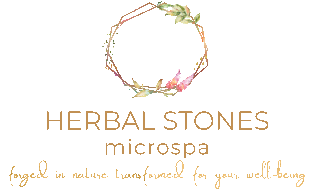Integrating light to moderate strength training and massage therapy can profoundly impact overall health and well-being. This dynamic combination helps improve muscle strength, maintain mobility, speed recovery, and alleviate chronic or exercise-induced pain. Backed by reputable studies sourced primarily from PubMed, the benefits of this pairing are well-supported by science, offering an evidence-based approach to maintaining physical vitality at any age.
For those aiming to remain active and pain-free, the synergy between strength training and massage therapy presents an effective and accessible solution. This approach can transform your routine to enhance exercise recovery or manage everyday discomfort. Learn the science behind how these practices work together and explore safe ways to integrate them into your life.
Benefits of Light to Moderate Strength Training
Regular strength training is crucial for preserving muscle mass and bone density, which naturally decline with age. A Cold Spring Harbor Perspectives in Medicine review emphasizes that endurance and strength training lead to significant physiological adaptations, enhancing overall physical capacity and health. PubMed
These adaptations are vital for reducing the risk of falls and fractures and promoting independence in older adults.
Role of Massage Therapy in Musculoskeletal Health
Massage therapy, including techniques like deep tissue massage, plays a significant role in musculoskeletal health. A literature review in Dermatologic Surgery discusses massage’s efficacy in scar management, indicating its potential to improve tissue flexibility and reduce discomfort. PubMed
While this study focuses on scar management, massage therapy principles apply broadly to musculoskeletal health, aiding pain reduction and mobility enhancement.
Enhancing Mobility Through Massage Therapy
Massage therapy has been shown to improve mobility by alleviating muscle tension and increasing joint flexibility. A study published in Head & Face Medicine evaluated the efficacy of manual soft tissue therapy and therapeutic exercises in patients with temporomandibular joint disorders (TMD).
The results indicated that massage therapy significantly reduced pain and improved mandibular mobility, highlighting its role in enhancing movement and function. Head & Face Medicine
Preventing Disease with Massage Therapy
Beyond mobility, massage therapy contributes to disease prevention by reducing stress, enhancing immune function, and alleviating pain.
The National Center for Complementary and Integrative Health (NCCIH) notes that massage therapy may provide short-term benefits for conditions like neck and shoulder pain, which, if left unaddressed, can lead to chronic issues.
Scientific Evidence Supporting Massage Therapy
A systematic review and meta-analysis published in Pain Medicine assessed massage therapy’s impact on function in pain populations. The study concluded that massage therapy effectively reduces pain intensity and improves functional outcomes, supporting its integration into pain management strategies. Oxford Academic
Synergistic Effects of Combining Strength Training and Massage Therapy
Combining strength training with massage therapy can amplify the benefits of each modality. Strength training induces muscle adaptations that enhance strength and endurance. PubMed
Massage therapy can complement these adaptations by reducing muscle tension and promoting recovery, thereby supporting consistent training and reducing the risk of injury.
Safe At-Home Strength Training Exercises
For those beginning a strength training routine at home, consider the following exercises:
- Modified Push-Ups: Start in a plank position with knees on the ground. Lower your chest toward the floor, then push back up.
- Heel Raises: Stand and slowly rise onto your toes, then lower back down.
- Plank Holds: Support your body on forearms and toes, keeping a straight line from head to heels. Hold for 20–30 seconds.
Before starting any new exercise regimen, consult with a healthcare provider or a qualified massage therapist to ensure these exercises are appropriate for your health status.
Wrapping It Up
Integrating light to moderate strength training with regular massage therapy can significantly enhance musculoskeletal health in adults. This combined approach supports muscle strength, mobility, and recovery, contributing to a higher quality of life.
For those seeking professional massage therapy, Herbal Stones offers services such as full-body massage in South Bend and deep-tissue massage. A skilled massage therapist can provide personalized care to meet your health needs. Contact Herbal Stones today.
Note: Always consult with healthcare professionals before beginning any new exercise or therapy program to ensure it aligns with your health needs.

